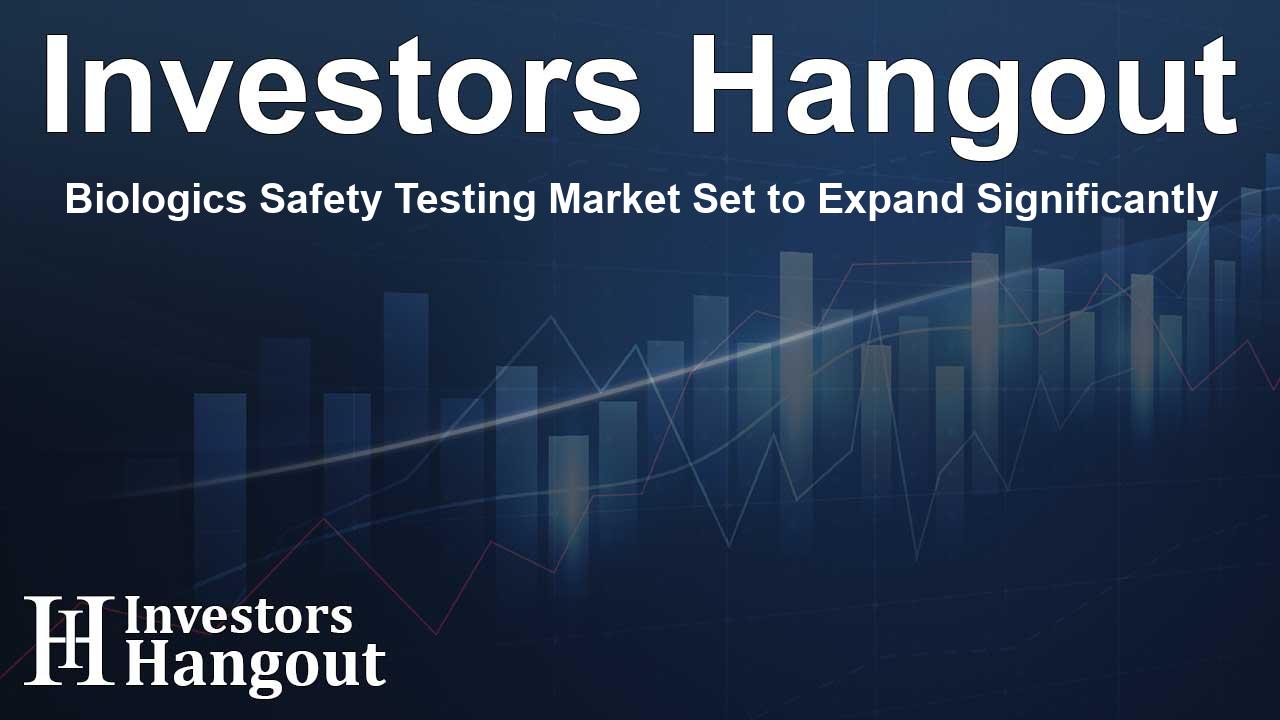Biologics Safety Testing Market Set to Expand Significantly

Understanding the Biologics Safety Testing Market Growth
The biologics safety testing market is on the cusp of remarkable expansion, with an anticipated annual growth rate of 13.64% leading to an impressive valuation of USD 14.45 billion by 2034. This expansive growth trajectory is driven by various factors, which we will explore in detail.
Key Drivers of Market Expansion
Several key factors are fueling the growth of the biologics safety testing market:
Innovative Therapies
The development of novel therapies, particularly cell and gene therapies, is a significant catalyst for this market. These innovative treatments require robust safety testing to ensure purity, safety, and efficacy. The rise in demand for such therapies correlates directly with the expansion of biologics safety testing services.
Regulatory Frameworks
Stringent regulatory guidelines play a pivotal role in the demand for safety testing. As regulatory bodies enforce higher standards for biologics, organizations must adapt by implementing comprehensive testing protocols.
Increasing Outsourcing
Another contributing factor is the increasing trend of outsourcing safety testing to specialized laboratories. This shift allows biopharmaceutical companies to focus resources on core operations while leveraging specialized expertise for safety assessments.
Market Segmentation Analysis
The biologics safety testing market can be segmented based on product types, test types, applications, and end-users.
Product Types
In 2024, the kits and reagents segment is expected to capture a significant share. As the demand for monoclonal antibodies and complex biologics grows, so does the requirement for effective testing reagents. Additionally, the instruments segment shows potential for rapid growth, with innovations in instruments designed for efficient safety testing.
Test Types
Among the various test types, endotoxin tests currently dominate the market. These tests are critical for assessing the safety of injected products. Moreover, the sterility tests segment is expected to see considerable growth due to advancements in testing technologies that yield quicker and more accurate results.
Applications
Looking at applications, the monoclonal antibodies segment led the market in 2024. The ongoing development of these therapies, alongside rising chronic disease incidences, drives this segment's expansion. The cell and gene therapy segment is projected to grow even faster, propelled by increasing safety concerns associated with contamination.
Regional Insights
Geographically, the biologics safety testing market is dominated by North America. This region accounted for a significant market share due to its robust pharmaceutical and biotechnology sectors and forward-thinking regulatory frameworks. The region's investment in research and development provides a fertile ground for innovations in safety testing.
Asia-Pacific Growth Potential
Looking forward, the Asia-Pacific region is poised for rapid growth in this market, driven by government support and an expanding manufacturing base. Countries like China and India are investing in advanced laboratory technologies, enhancing their capabilities for high-volume testing.
Challenges in the Market
Despite its growth prospects, the biologics safety testing market faces challenges. Complex and evolving regulatory requirements can complicate the path to market for new products. Additionally, the diversity in biologics poses difficulties in creating standardized testing protocols.
Recent Developments and Innovations
Recent advancements in the industry include developments like automated systems for testing and innovations in PCR and next-generation sequencing techniques. These innovations are crucial for speeding up the testing processes while maintaining accurate results, ultimately supporting the quality assurance processes within the biologics field.
Conclusion
The biologics safety testing market is set for substantial growth over the coming years. With an expanding portfolio of innovative therapies, along with the increasing complexity of testing requirements, companies in this field must leverage advanced testing methodologies and comply with stringent regulations to ensure safety and efficacy.
Frequently Asked Questions
1. What is the expected growth rate of the biologics safety testing market?
The market is expected to grow at a CAGR of 13.64% from 2025 to 2034.
2. What are the primary factors driving this market?
Key factors include innovative therapies, stringent regulatory guidelines, and the rising trend of outsourcing safety testing.
3. Which product segment is leading the market?
The kits and reagents segment is projected to capture a significant share due to advancements in biologics.
4. How does the Asia-Pacific region compare to North America in this market?
While North America currently leads, the Asia-Pacific region is experiencing rapid growth driven by investment and demand for advanced therapies.
5. What challenges does the biologics safety testing market face?
Challenges include complex regulatory frameworks and the need for standardized testing protocols.
About The Author
Contact Henry Turner privately here. Or send an email with ATTN: Henry Turner as the subject to contact@investorshangout.com.
About Investors Hangout
Investors Hangout is a leading online stock forum for financial discussion and learning, offering a wide range of free tools and resources. It draws in traders of all levels, who exchange market knowledge, investigate trading tactics, and keep an eye on industry developments in real time. Featuring financial articles, stock message boards, quotes, charts, company profiles, and live news updates. Through cooperative learning and a wealth of informational resources, it helps users from novices creating their first portfolios to experts honing their techniques. Join Investors Hangout today: https://investorshangout.com/
The content of this article is based on factual, publicly available information and does not represent legal, financial, or investment advice. Investors Hangout does not offer financial advice, and the author is not a licensed financial advisor. Consult a qualified advisor before making any financial or investment decisions based on this article. This article should not be considered advice to purchase, sell, or hold any securities or other investments. If any of the material provided here is inaccurate, please contact us for corrections.
